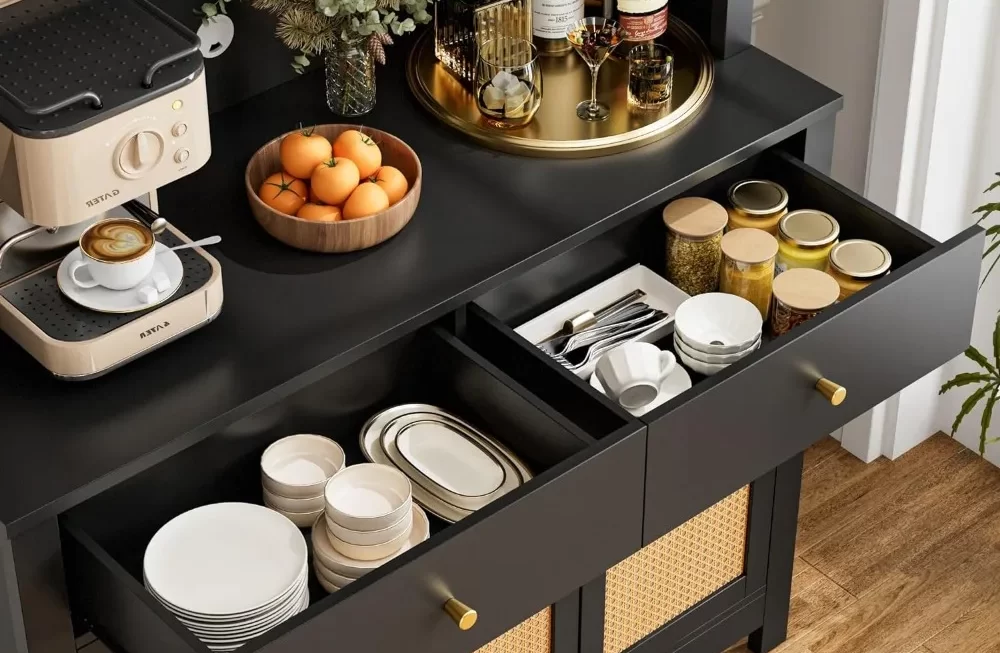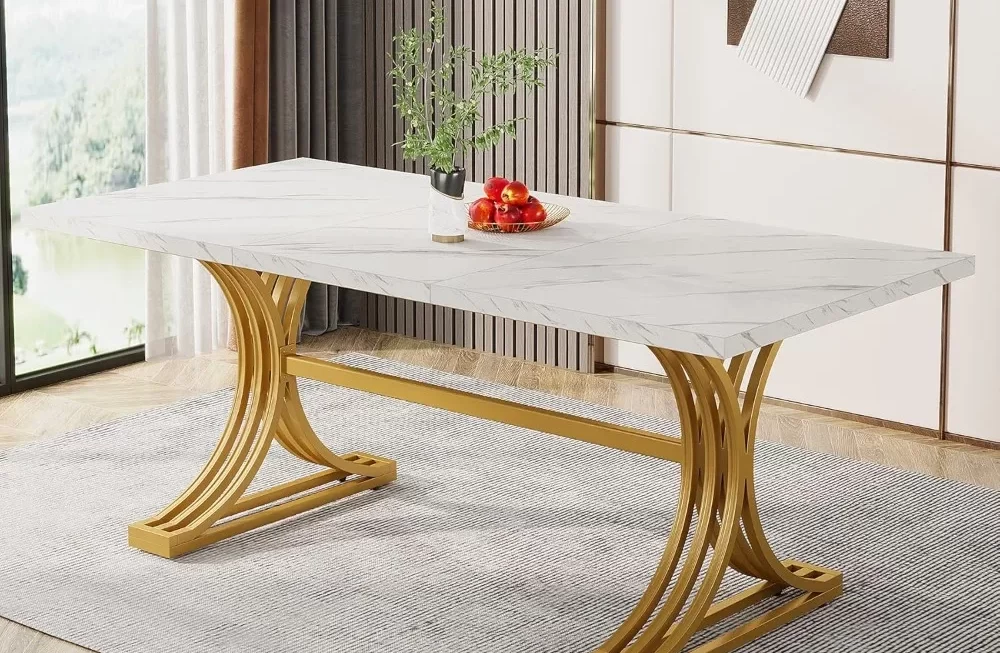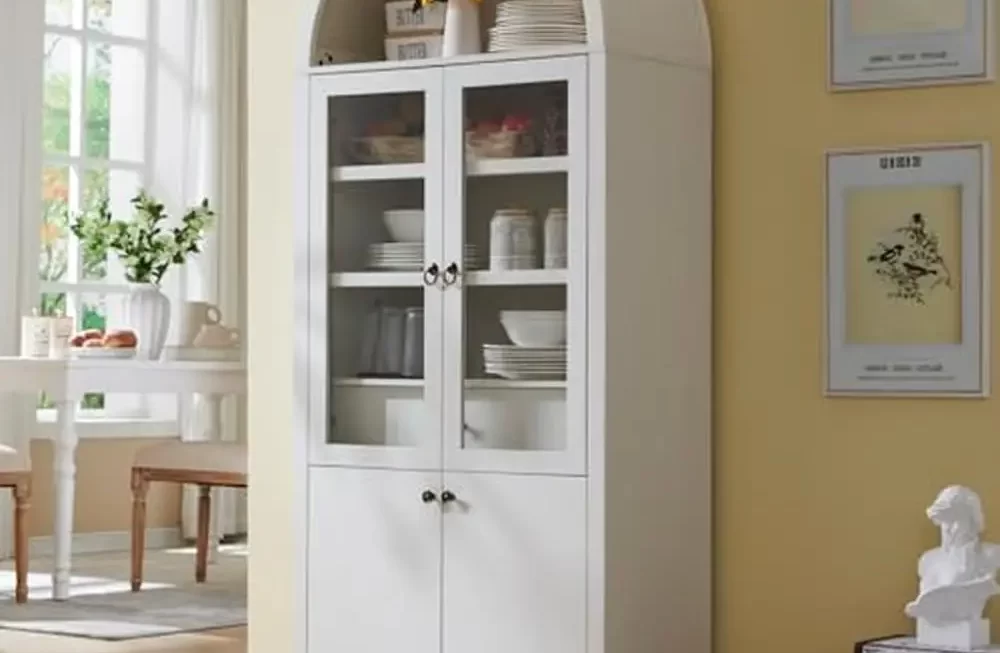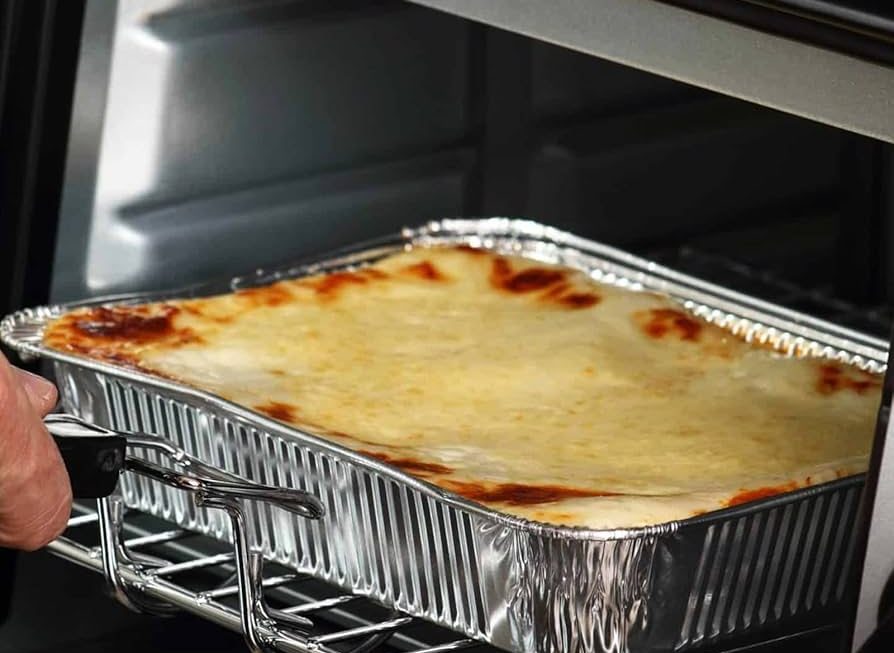Importance of Cabinet Depth
The depth of upper kitchen cabinets is a critical aspect of kitchen design. It has a big influence on how you use your kitchen every day. A proper cabinet depth can ensure that items are within easy reach and provide enough room for storage. How deep are upper kitchen cabinets? Choosing the right depth can be the difference between a well-organized kitchen and one that feels cramped or inefficient.
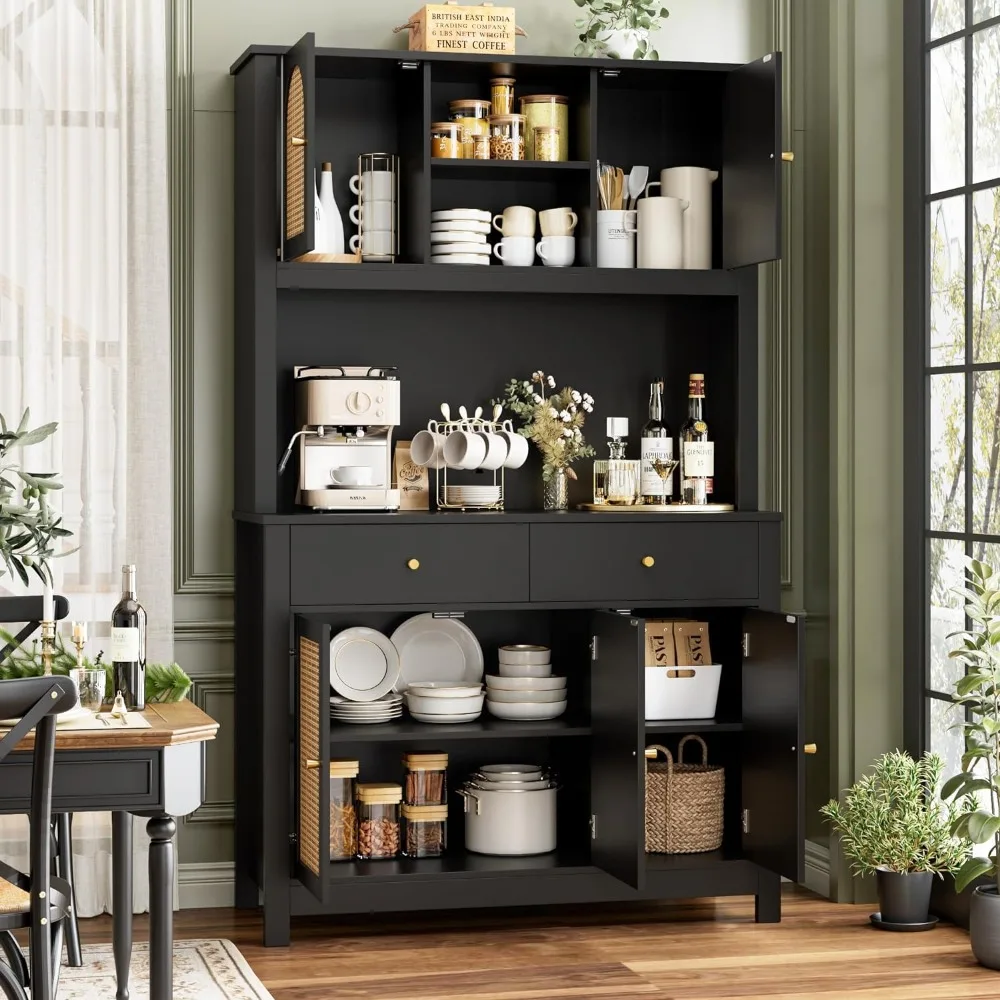
Impact on Storage and Accessibility
How deep are upper kitchen cabinets? A standard depth for upper cabinets is about 12 inches. This size works well for storing plates, glasses, and other kitchen essentials. However, if the cabinets are too deep, items at the back can become hard to reach. On the other hand, if they’re too shallow, they might not hold all of your kitchen items.
Standard vs. Custom Depth Options
When it comes to cabinet depth, you have two main choices: stick with the standard or go custom. Standard depths are a safe bet if you’re looking for quick installation and lower costs. But custom options let you tailor cabinet depth to your specific needs. This is great for special items or appliances that require more space.
Key Dimensions of Upper Kitchen Cabinets
Understanding the key dimensions of upper kitchen cabinets is vital. How deep are upper kitchen cabinets?
Standard Depth
Most upper kitchen cabinets have a depth of around 12 inches.
This depth is good for storing everyday kitchen items.
But, if you need to store bigger items, consider deeper cabinets.
Variations by Function and Installation
Upper kitchen cabinet depths can vary based on function.
For instance, cabinets over a fridge might be deeper.
When installing, think about what you will store in each cabinet.
Choose depths that make items easy to reach and organize.
Cabinet dimensions may need to change based on their location.
Consider the length of the items you’ll store when selecting cabinet depth.
Cabinet function often dictates the best depth for each area.
Above the stove, for example, you may want shallower cabinets.
This can prevent the risk of hitting your head when you’re cooking.
Cabinets in corners may require special sizes for good access.
Designing Based on Ceiling Height
Strategies for High-Ceiling Kitchens
How deep are upper kitchen cabinets? In kitchens with high ceilings, extending the upper cabinets to the ceiling can optimize storage space. Consider adding a tier of smaller cabinets on top of standard upper cabinets for easy storage of rarely used items. Use appropriate molding at the top to blend the cabinets with the ceiling seamlessly.
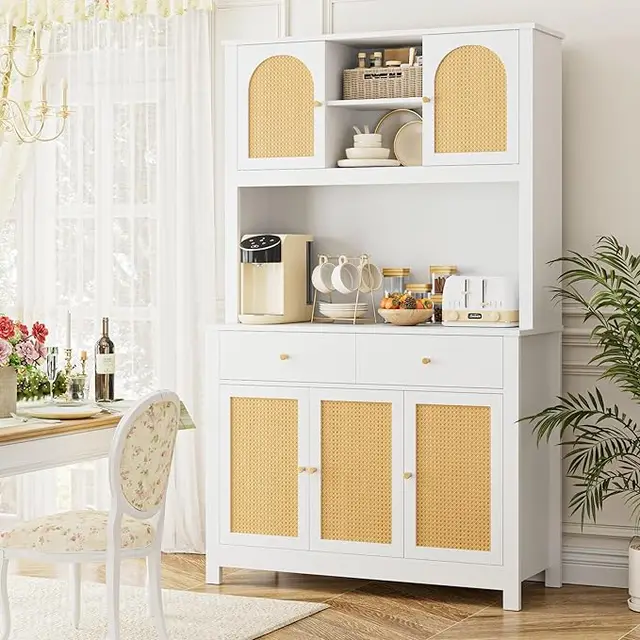
Adjusting Cabinet Height for Aesthetics and Function
For aesthetics, align the top of the cabinets with key visual elements in your kitchen, such as windows. Functionally, ensure cabinets are at a height that allows easy access. For tall ceilings, consider using a combination of different cabinet heights to create a balanced look that’s still functional.
Factors Influencing Depth of Upper Cabinets
When planning your kitchen, the depth of upper cabinets is shaped by several factors. It’s key to measure and think about these elements to make sure your kitchen is both useful and looks good.
Layout and Placement Considerations
Where you place cabinets changes the depth you need. Think about how you use your kitchen and where appliances go. This helps decide how deep cabinets should be. Keep things within reach but don’t let them block your way.
The function of each cabinet also decides its depth. For example, cabinets above a microwave may need more depth. Corner cabinets often need special sizes for best use. Think about these needs when choosing cabinet depths.
Relationship to Lower Cabinets
Upper cabinets should match lower ones in style and function. The standard depth for lower cabinets is 24 inches. Plan upper cabinets around this for a balanced look and good use of space. Shallow upper cabinets can make working on counters easier. Too deep can make it hard to find things inside.
Your countertops also affect upper cabinet depth. You need enough space to work and not feel crowded by the cabinets above. A good rule is about 18 inches between the countertop and the bottom of upper cabinets.
In summary, when planning the depth of upper kitchen cabinets, think about your kitchen’s layout, the way you use space, and how upper and lower cabinets work together. This helps you get a kitchen that works well and fits your style.
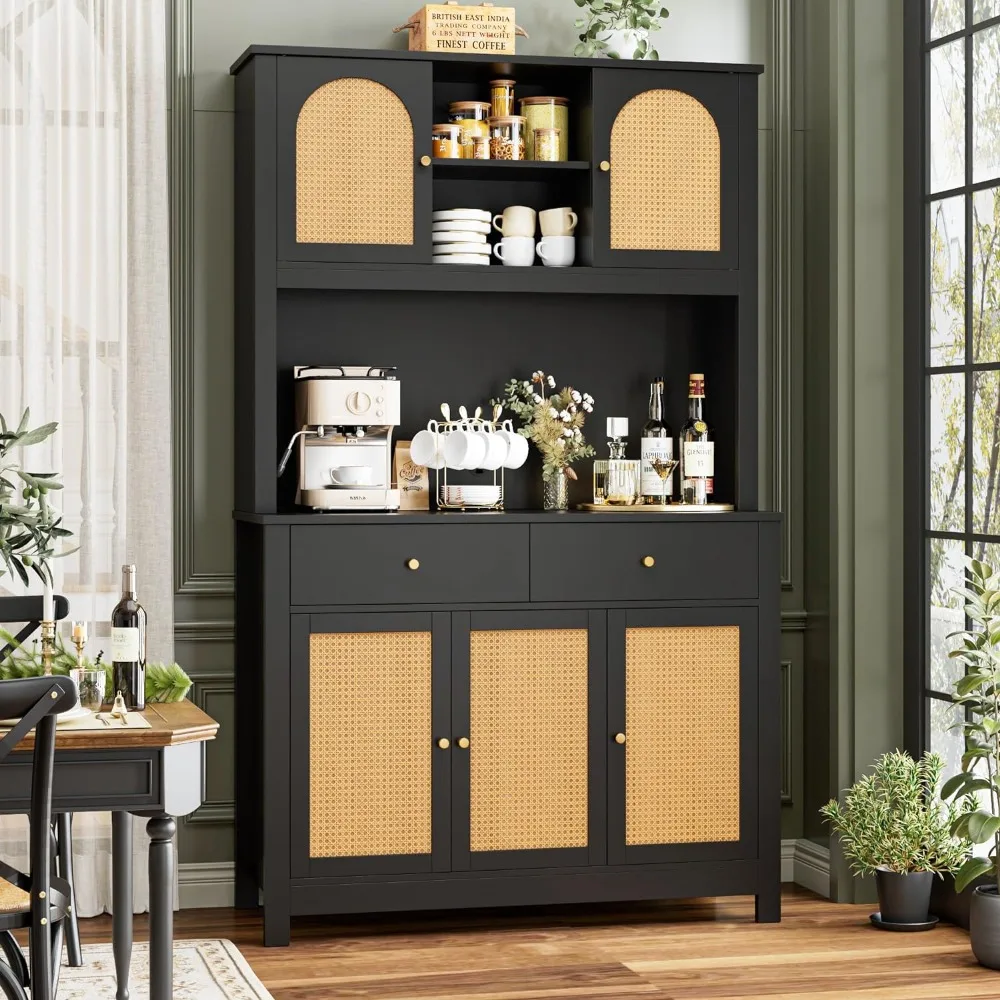
Customizing Your Kitchen Cabinet Depth
Customizing cabinet depth has its perks. It allows you to design for your own use and style. Custom options tailor to what you store and your kitchen’s layout. Whether it’s larger cookware or appliances that require more depth, custom cabinets cater to these needs.
Options for Personalization
You can choose depths that range beyond the standard 12 inches. For special items, consider depths of up to 24 inches. Also, think about adding cabinets of different depths for a dynamic look. This custom approach lets you design a kitchen that truly fits your lifestyle.
Benefits of Tailor-Made Cabinets
Tailor-made cabinets maximize your kitchen space. They also increase your home’s value. With custom cabinets, your kitchen will meet your needs more effectively. Plus, they can match your kitchen’s unique design features.
Every kitchen has its own style and storage needs. Customizing the depths of your cabinets means they will serve you better. With custom cabinets, you get a kitchen that’s both attractive and practical.
Installation Tips for Upper Kitchen Cabinets
When installing upper kitchen cabinets, accuracy and planning are key. Here are helpful tips to ensure your cabinet installation is a success.
Professional Measurements and Setup
Hire a skilled contractor to measure your kitchen. They will ensure cabinets fit perfectly and look great. A pro will consider your kitchen’s layout, ceiling height, and the relationship between upper and lower cabinets. They can handle tricky areas, like corners, and recommend optimal cabinet depths.
DIY Cabinet Installation Advice
If you prefer to install cabinets yourself, take accurate measurements. Use a level to maintain straight lines. Start with corner cabinets and work outwards. Remember to leave space for appliances and ensure cabinets align with lower ones. Use shims to adjust for uneven walls and secure cabinets with proper anchors.
Precise planning and following these tips can lead to a smooth installation. Properly installed upper kitchen cabinets enhance kitchen function and appeal.
Common Questions About Upper Kitchen Cabinet Dimensions
When planning kitchen cabinet installations, homeowners often have questions about upper cabinet dimensions. Here are some common inquiries and straightforward answers to guide you.
Optimal Depth for Different Kitchen Styles
What’s the best cabinet depth for your kitchen? It can depend on the kitchen’s layout and style. A good starting point is the standard 12 inches, ideal for most items. However, if you prefer a modern look with sleek lines, consider deeper cabinets. For a cozy, traditional kitchen, the standard depth maintains that classic feel.
Remember, the right depth helps your kitchen stay organized and easy to use. Don’t hesitate to go custom for a perfect fit. Consider every angle, from the size of your dishes to how you move in the space.
Adjusting Dimensions for Special Kitchen Features
For unique features, you might want to tweak cabinet dimensions. Have a large fridge or range hood? Make cabinets above these appliances deeper. This helps integrate the appliances smoothly into your design.
For corners or small spaces, think about modifying the width or adding a clever solution like a lazy Susan. Adapt cabinet dimensions for ease of use and to maximize the available space.
Personalizing your kitchen with the right cabinet dimensions can make a world of difference. Take the time to consider your specific needs, and make adjustments that enhance both function and style. Your kitchen should not only look great but also fit your lifestyle, making cooking and socializing a pleasure.
